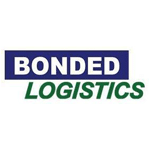The Comprehensive Guide to Multi Location Inventory Management and Software

In today’s globalized world, it is common for businesses to have multiple warehouses and logistics facilities to cater to their significant customer base. Multi-location inventory management is a crucial aspect of managing inventory, allowing businesses to optimize their warehouse operations and ensure customer satisfaction. This comprehensive guide will delve into multi-location inventory management, its importance, the challenges faced by industry professionals, and the software solutions available for effective inventory management.
The Importance of Multi Location Inventory Management
Managing inventory across multiple locations or warehouses can be a daunting task. The challenges of tracking inventory levels, optimizing warehouse layout, maintaining safety stock, and ensuring proper inventory levels are amplified when dealing with multiple facilities. Despite these challenges, implementing multi-location inventory management practices is essential for businesses with multiple warehouses or logistics facilities.
Effective multi-location inventory management can lead to significant improvements in overall business operations, cost reduction, and customer satisfaction. By centralizing inventory management and leveraging the right tools and strategies, businesses can better manage their resources, streamline processes, and maintain a competitive edge in the market.
Challenges of Multi Location Inventory Management
Managing inventory across multiple locations presents challenges that single-facility businesses may not experience. Some of the common difficulties faced by industry professionals when they need to manage inventory include:
- Inaccurate inventory records: Keeping track of inventory across multiple locations can be prone to errors, leading to stockouts or excess inventory.
- Lack of visibility: Gaining real-time insight into inventory levels and warehouse operations across all locations can be challenging, making it difficult to make informed decisions.
- Coordination and communication: Efficiently coordinating and communicating between multiple warehouses and logistics facilities can be a significant challenge, leading to inefficiencies and delays.
- Warehouse optimization: Optimizing warehouse layout and processes for multiple locations can be a time-consuming and intricate task.
- Regulatory compliance: Ensuring compliance with local and international regulations across different warehouses and logistics facilities can be complex and demanding.
Related: A Guide to Warehouse Inventory Management: Best Practices and Tips for Success
Multi Location Inventory Management Software: A Comprehensive Solution
Effective multi-location inventory management requires the right tools, and a robust software solution can provide just that. Multi-location inventory management software is designed to streamline inventory management across multiple warehouses and logistics facilities, simplifying the process and ensuring accuracy.
Some key features of multi-location inventory management software include:
- Centralized inventory records: Easily track inventory levels, sales orders, purchase orders, and stock transfers across multiple sites.
- Location-based inventory: Allocate stock to the appropriate workstations or warehouses based on factors like customer demand and shipping costs.
- Real-time inventory tracking: Monitor inventory and production status across all locations, ensuring proper stock levels and avoiding stockouts.
- Warehouse management system integration: Seamless integration with warehouse management systems (WMS) allows for enhanced visibility into warehouse operations and more efficient management of multiple locations.
- Scalability: From small-scale software solutions to comprehensive multi-location software solutions, inventory management software can grow with your manufacturing business, accommodating single production lines or multiple facilities.
- Reporting and analytics: Gain insights into inventory performance, sales trends, and warehouse efficiency through detailed reporting and analytics tools.
- Automation: Streamline processes and reduce manual tasks by automating inventory management functions, such as reordering, stock transfers, and demand forecasting.
- Regulatory compliance: Ensure compliance with local and international regulations by maintaining accurate and up-to-date inventory records.

Implementing a Multi Location Inventory Management Solution
To effectively manage inventory across multiple warehouses, you’ll need to implement a comprehensive inventory management solution. Here are some steps to help you get started:
- Assess your current inventory management practices and identify areas for improvement.
- Determine the most comprehensive solution for your business, considering factors like the number of warehouses, customer demand, and shipping costs.
- Select the right multi-location inventory management software that caters to your specific needs.
- Train your team on the new software system, ensuring they understand how to track inventory levels, manage production, and transfer inventory between several logistics centers.
- Continuously monitor and evaluate the effectiveness of your multi-location inventory management solution, making adjustments as needed to maintain proper inventory levels and meet customer demand.
- Implement best practices for warehouse optimization, such as utilizing the proper tools for inventory counts, optimizing warehouse layout, and implementing safety measures.
- Stay up-to-date with regulatory changes and industry developments to ensure your inventory management system remains compliant and competitive.
Centralizing Operations with a Multi-Location Inventory Solution
In an increasingly interconnected world, businesses with multiple warehouses or logistics facilities often face challenges in centralizing operations. A multi location inventory solution can help streamline processes and improve efficiency across all locations. This is opposed to having each location function independently and create silos of data that can lead to communication gaps, inaccurate inventory records, and disruptions in the supply chain.
In this section, we’ll explore the benefits, key components, and some common use cases of an effective solution.
Benefits of Centralizing Operations with a Multi Location Inventory Solution
- Improved efficiency: Centralizing inventory management across multiple locations allows businesses to streamline processes, reduce manual tasks, and eliminate redundancies, leading to greater efficiency and productivity.
- Lower costs: Centralizing operations can lead to economies of scale, resulting in savings on shipping and delivery costs as well as overhead expenses associated with managing separate warehouses independently.
- Enhanced visibility: A centralized inventory system provides real-time visibility into stock levels and warehouse operations, enabling better decision-making and more accurate demand forecasting.
- Better communication and coordination: Centralized inventory management facilitates communication and coordination among different warehouses and logistics facilities, improving overall operational effectiveness.
- Easier regulatory compliance: Centralized systems simplify compliance with local and international regulations by maintaining accurate and up-to-date inventory records across all locations.
- Scalability: As your business grows and evolves, a centralized multi-location inventory system can adapt to accommodate additional warehouses or facilities without major disruptions to your operations.
Use Cases for Multi-Location Inventory Solutions
- Logistics/3PLs: 3PLs and logistics companies often manage large warehouses with high levels of inventory turnover. A centralized system can help streamline the transfer of goods between different locations, reducing costs and increasing operational efficiency. Also, customer visibility is also important for customers to have real time visibility to their inventory across different locations.
- Distribution Companies: Distributors must be able to keep track of inventory across multiple warehouses or distribution centers in order to meet customer demand. A centralized system allows for improved visibility into stock levels and more efficient order fulfillment.
- Manufacturing: Manufacturing companies often operate multiple warehouses or production centers. A multi-location inventory system can help improve collaboration between facilities, ensuring proper resource allocation and improved quality control across the board.
- eCommerce Fulfillment: E-commerce businesses often rely on a network of warehouses and distribution centers to fulfill orders in a timely manner. A multi-location inventory solution allows for better management of stock levels, more accurate order fulfillment, and faster delivery times.

Cadre Technologies: A Leader in Multi-Location Inventory Management Software Solutions
Cadre Technologies is a leading provider of multi-location inventory management software and warehouse management systems. Our solutions are designed to help businesses of all sizes effectively manage their inventory across multiple locations and improve overall operational efficiency.
Some of the key features of Cadre Technologies’ multi-location inventory management software include:
- Comprehensive, real-time visibility: Get a complete view of your inventory across all locations regardless of WMS being used at the location, enabling you to make informed decisions and maintain optimal stock levels. This supply chain visibility is very important in the 3PL / 4PL world.
- Seamless integration with existing systems: Cadre Technologies’ software integrates easily with your existing warehouse systems, ERP, and other business software, providing a unified solution for managing your inventory.
- Customizable and scalable: Cadre Technologies offers solutions that can be tailored to your specific business needs and easily scaled to accommodate growth or changes in your operations.
- Expert support and implementation services: Benefit from a dedicated team of experts who will guide you through the implementation process and provide ongoing support to ensure your success.
By choosing Cadre Technologies as your multi-location inventory management software provider, you can streamline your inventory processes, improve visibility and control, and ultimately increase customer satisfaction and profitability.
Conclusion
Multi-location inventory management is a critical aspect of managing inventory in businesses with multiple warehouses or logistics facilities. Implementing a robust multi-location inventory management software solution can streamline inventory control, optimize warehouse operations, and lead to more effective order management. By following the steps outlined in this guide and partnering with a trusted provider like Cadre Technologies, you can achieve a successful multi-location project and enjoy the benefits of lower costs, increased customer satisfaction, and more sustainable business practices.
Frequently Asked Questions (FAQs)
What is the difference between a single warehouse and multiple warehouse management?
Single warehouse management focuses on optimizing inventory and warehouse operations within one location, while multiple warehouse management involves managing inventory and operations across several logistics facilities. Multiple warehouse management requires a more comprehensive solution to centralize processes, improve visibility, and streamline communication between facilities.
How can I optimize a warehouse layout for multiple locations?
Optimizing warehouse layout for multiple locations involves analyzing the unique needs and requirements of each location, and assessing factors such as customer demand, shipping costs, and available space. Implementing efficient storage and picking strategies, such as zone picking or wave picking, can also help optimize warehouse layout and improve overall efficiency.
Can a multi-location inventory management software integrate with my existing systems?
Yes, most multi location inventory management software solutions are designed to integrate seamlessly with existing warehouse management systems (WMS), enterprise resource planning (ERP) systems, and other business software. This ensures a unified solution for managing your inventory and warehouse operations.
What are some features to look for in multi-warehouse software?
Some essential features to look for in multi-warehouse software include centralized inventory management, real-time inventory tracking, warehouse management system integration, scalability, customization, and robust reporting and analytics tools. Additional features, such as demand forecasting, automation, and regulatory compliance management, can also be beneficial.
Can multi-location inventory management software help me maintain a safety net of inventory?
Yes, multi location inventory management software can help you maintain a safety net of inventory by providing real-time visibility into stock levels across all locations. This allows you to monitor and adjust inventory levels as needed, ensuring that you maintain an adequate safety stock to meet customer demand and avoid stockouts.









